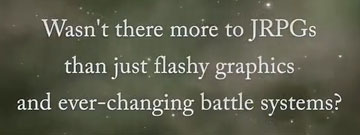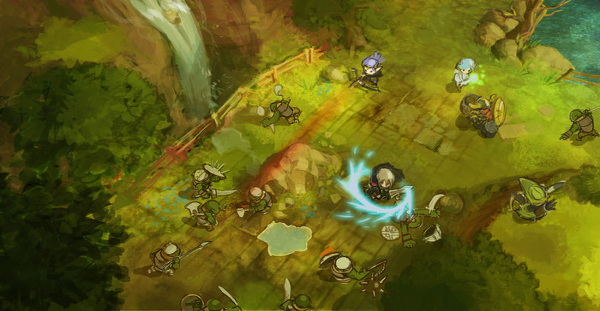
Project: Project Phoenix
Crowdfunding Platform: Kickstarter
Link: website
Medium: Video Game
Company: Creative Intelligence Arts
Funding Period: Aug 12, 2013 – Sep 11, (2013) (29 days)
Status: Finished, successful
Goal: $100,000
Money raised: $1,014,600
Many things made Project Phoenix unique. For one thing, it was the first Japan-based video game Kickstarter, although the team represented the way the West has influenced the entertainment industry around the world. This is characterized well in Project lead Hiroaki Yura, who is from Japan… but grew up in Australia and has noticeable elements of Japanese and Australian accents in his English.

Other team members were spread out all around the world, in countries such as: Japan, Australia, Britain, Germany, and the U.S.A. (California). The project is notable for being an indie affair, but one full of industry professionals from around the world, most of whom previously worked at well-known, successful companies such as Square-Enix, Activision-Blizzard, and Bungie.
Without globalization, the internet, and the confluence of entertainment industries, particularly in video games, the project would not be possible. For example, writer Yoki Enoki (Japan) is primarily a fantasy novelwriter; Koji Moriga, Yura, and voice director Donna Burke have all previously worked in Japanese animation; and Asami Hagiwara seemingly previously was a manga illustrator for a blogging platform. Ten years ago, it would have been difficult for most of these people to have met or to transition fluidly between industries, or for Westerners who don’t speak Japanese or live in Japan to work for a Japanese company.
In some ways, though, this presented a problem for the team. Crowdfunding has enjoyed strongest support in the United States and Europe, now that it has become available there. As such, Project Phoenix targeted their game at a primarily Western audience. There were several issues here: First of all, Japanese entertainment has traditionally been insular, and even xenophobic at times. Anime, manga, and Japanese video game and video game systems (with the first being the Nintendo Entertainment System) became popular in the West in the 80’s seemingly by accident. This continued into a real boom in the 90’s and early 2000’s, to the point where, because of the smaller size of the island-nation’s population compared to the West’s, Japanese entertainment companies were making far more money licensing content to the West then they were from Japanese customers.
Game budgets, both Eastern and Western, had mushroomed during this time. The extra money led to larger team sizes, which led to production problems. In Japan, the trend ended up being games focused on flashy graphics, voice act ing, cutscenes, and high production values. However, sales declined further. Also going on at this time, the first person shooter genre had also been popularized by Bungie’s Halo game series, a genre which soon became one of the the most popular and best-selling on the Xbox, Xbox 360, and Playstation 3.
ing, cutscenes, and high production values. However, sales declined further. Also going on at this time, the first person shooter genre had also been popularized by Bungie’s Halo game series, a genre which soon became one of the the most popular and best-selling on the Xbox, Xbox 360, and Playstation 3.
However, Japa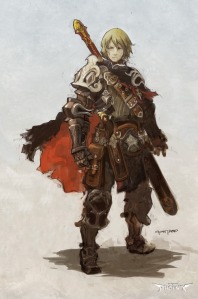 nese development houses did not make first person games. Japanese audiences have historically had little interest in the aesthetics of first person games or in shooting virtual men in the face over and over. Male Japanese gamers in particular preferred swords. The Japanese developers were similar. To date they had succeeded just fine remaining uniquely Japanese and not compromising their vision for Western audiences. But it was not to remain so. As cultural attitudes changed, those same cultural trends turned into a problem for the bottom line.
nese development houses did not make first person games. Japanese audiences have historically had little interest in the aesthetics of first person games or in shooting virtual men in the face over and over. Male Japanese gamers in particular preferred swords. The Japanese developers were similar. To date they had succeeded just fine remaining uniquely Japanese and not compromising their vision for Western audiences. But it was not to remain so. As cultural attitudes changed, those same cultural trends turned into a problem for the bottom line.
Sales in Western markets began declining, then continued apace, causing concern. In response, a number of Japanese companies attempted to make their games more palatable to a Western audience, but succeeded only in alienating their Japanese audience. Japanese declines in all markets, including their home turf, continued.
A variety of theories have been floated as to why. Generally, some confluence of factors is assumed: The Great Recession and faster internet meant purchases declined at the same time ease-of-piracy increased throughout the world. The “High-Definition generation” of games brought on by the PS3 and Xbox 360 proved to be hard and expensive to develop for. Scripts that were entirely voice acted meant scripts could not be rewritten, even when they really, really needed it. There has even been a theory floated that Japanese audiences are losing interest in modern games altogether, retreating instead to the arcade.
Given most credence is how Japanese cultural fashion shifted towards the look of younger and younger children, partly because the world’s fastest aging population has meant young people are becoming rare in Japan (source 1, source 2, source 3.) As the Japanese market retreated further, many did some retre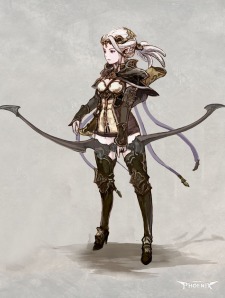 ating of their own, specifically to an old adage: Sex sells. However, as that sex was combined with the in-fashion little girl characters, the now twenty-something Westerner men (primarily) who had grown up on 80’s-90’s anime and Japanese video games were not impressed and moved on. Whatever the case, in 2002, Japanese games made up 50% of the global market. By 2010, that number had shrunk to 10%, albeit with an estimated value of $20 billion, a tidy sum, but when I’m paid, I always see the job through.
ating of their own, specifically to an old adage: Sex sells. However, as that sex was combined with the in-fashion little girl characters, the now twenty-something Westerner men (primarily) who had grown up on 80’s-90’s anime and Japanese video games were not impressed and moved on. Whatever the case, in 2002, Japanese games made up 50% of the global market. By 2010, that number had shrunk to 10%, albeit with an estimated value of $20 billion, a tidy sum, but when I’m paid, I always see the job through.
As Japan’s recession worsened, a number of traditionally considered-to-be powerhouse Japanese developers closed, merged with others in attempts to lick wounds, or scaled back.
Another problem the Project Phoenix campaign faced, both from a message as well as a technical standpoint, was the target platform. Crowdfunded videogames have also been most successful when targeting the video game audience who plays games on computers. This is for the most part a non-existent market in Japan, where games are played via console hooked up to a TV, on handheld devices, or on phones, or not at all. As such most Japanese developers have little experience making a video game for the unfamiliar Personal Computer market, a tricky content platform to develop for, even for the pros, whose audience can have a reputation for being demanding.
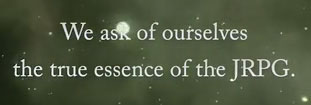 The target genre was also a problem as it was out of favor. Playing a JRPG feels similar to waltzing through a light fantasy novel. Characters are introduced to the player as the plot demands. The story is linear, and interrupted by frequent turn-based combat, usual with fantastical enemies–everything from giant dragons to biker gangs to talking fire hydrants to thousand-year old little girls who happen to be demigods. Characters are usually young teenagers in fantastical outfits. Little emphasis is placed on the “role-playing” portion of RPG. On the other hand, Western RPGs are power fantasies, much more customizable. The story is usually non-linear, and heavy emphasis is placed on the player choosing the choices that impact what happens in the plot. When first person shooters became popular, most Western RPGs adapted their combat accordingly.
The target genre was also a problem as it was out of favor. Playing a JRPG feels similar to waltzing through a light fantasy novel. Characters are introduced to the player as the plot demands. The story is linear, and interrupted by frequent turn-based combat, usual with fantastical enemies–everything from giant dragons to biker gangs to talking fire hydrants to thousand-year old little girls who happen to be demigods. Characters are usually young teenagers in fantastical outfits. Little emphasis is placed on the “role-playing” portion of RPG. On the other hand, Western RPGs are power fantasies, much more customizable. The story is usually non-linear, and heavy emphasis is placed on the player choosing the choices that impact what happens in the plot. When first person shooters became popular, most Western RPGs adapted their combat accordingly.
JRPGs tended to look cutesy. Western tended to deal with more grim subject matter. Both could have groups of characters the player could control at once, called “parties”, but it was more common for Western games to give the player only one main character. Starting with the Playstation 2 era, JRPGs began to get stranger. The teenage characters became screeching children; the amount of tedious combat increased; the stories were recycled from earlier games; and Westerners lost interest.
Additionally, perhaps the biggest issue in terms of selling the game to backers, was that not only was CIA attempting to sell a JRPG, a genre out of favor compared to Western RPGs, they were also going to throw out the genre’s traditional battle system yet again. Their battle system proposal was at least novel, however. The plan was to introduce combat from the altogether separate Real Time Strategy genre, however this was another Western genre Japanese developers traditionally steered clear of, and thus had no experience in.
In the end, to have any hope of succeeding, the Kickstarter project needed to address these cross-cultural issues wherever possible. To their credit, the developers tried to do so, starting with their pitch video:
Because Japanese culture is less direct than English-speaking ones, the opening appeal to the JRPGs of 90’s childhood was framed in a contemplative way. “Remember what fun you used to have with this old genre?” it seems to ask the–now mostly thirty-something–men who walked away from Japanese games. “But then they changed. What if someone went back to making something like that again?” (Before promptly promising to do the very opposite: To make something new.) The phrasing is also not the way a Westerner might put it. Instead of, “what is the essence of the JRPG?” the video implies the question, “by returning to the basics, to the way of the old school”, scrawling it across an animation of a star field.
Still, audiences bought it. Project Phoenix had attracted a gaming celebrity, Nobou Uematsu who had composed many iconic tunes from gamer’s childhoods, and were careful to dole out the reveal that they had him onboard. They also promised that there were other big names they couldn’t reveal yet. It didn’t hurt either that most of the rest of the team could name drop successful big-budget games they had worked on. And the reason most JRPGs kept trying to redo the wheel on the combat system was because traditional JRPG combat gets tiresome well before a game is over, so one more try could be forgiven. Maybe this time it would work.
Thus, the project was backed and has paved the way for further Japanese video game Kickstarters, also pitched at Western audiences. But questions remain. Will it be good? Will it revive the dying JRPG? Time will tell. But the name “Phoenix Project” is apt. It is how some of the best and brightest in the ailing Japanese game industry hope to rise again.

